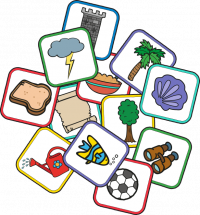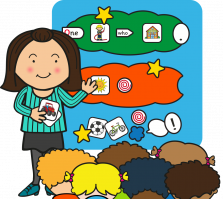Picture Prompt Poetry: Transforming KS1 Literacy into a Creative Adventure
This lesson plan is designed to inspire Key Stage One children to explore the art of poetry writing through the use of colourful picture prompts that spark creativity. The interactive approach aims to transform a traditional literacy lesson into an engaging and enjoyable experience for young learners. This resource invites teachers to step away from the conventional and embrace a playful method that ignites the imagination.
This lesson transforms traditional literacy by integrating visual stimulation with creative writing, encouraging children to express their thoughts freely. Playful learning methods are interwoven throughout the session, making the challenge of writing both accessible and fun. Overall, the tone is friendly and supportive, ensuring that every child feels confident in their creative abilities.
Learning Objectives
The objectives of this lesson are to boost literacy and foster creative expression among Key Stage One children. It is designed to support curriculum outcomes and elevate student engagement in a classroom setting. Each objective contributes directly to improved writing skills by encouraging imaginative thinking and structured sentence formation. Ultimately, this lesson plan aims to build a foundation for lifelong literacy and a love for the written word.
Materials and Resources
The materials required for the lesson include a set of colourful picture prompts that can be printed at home or school, or accessed via the Mighty Writer toolbars, which offers an array of inspiring images.
Additionally, supportive resources such as writing templates and interactive boards are recommended to enhance engagement and participation.
Setting the Scene with Picture Prompts
Vivid, stimulating picture prompts are used to capture the children's attention and set a dynamic stage for poetry writing. These images stimulate discussion and serve as visual cues that ignite the imagination. Their role is pivotal in transitioning the classroom from routine learning to a creative exploration of words and ideas.

Arrange picture prompts in accessible areas for all pupils to see, either at the front of the classroom, or dotted around various locations and tables.
Simple introductory activities allow children to familiarise themselves with the images and share their initial thoughts in a relaxed setting. This setup emphasises inclusivity, ensuring every child feels welcome to participate and contribute their unique perspectives.
Step-by-Step Lesson Plan
We’d recommend starting up with a warm-up discussion that focuses on a presentation of the picture prompts. This systematic approach helps pupils transition from general observation to focused creative writing.
Following the initial introduction, the lesson moves into specific timed activities that guide children through brainstorming ideas and organising their thoughts. Teachers utilise supportive practices to encourage risk-taking and experiment with new ideas in writing.
Creative Poetry Writing
The core activity involves children writing poems inspired by the picture prompts presented at the start of the lesson. Individual brainstorming sessions allow each pupil to reflect on the images and jot down ideas, while group sharing sessions help to further develop these thoughts. This process is not only fun but also stimulates the imagination and enhances language skills through creative expression.
Once ideas have been fully explored, guide children in crafting structured poems, moving from unstructured brainstorming to a more organised form of writing. You can provide supportive feedback and encourage pupils to take creative risks, allowing them to experiment with various poetic forms.
Integrating the Mighty Writer Resource
The Mighty Writer resource is seamlessly integrated into the lesson, utilising its image tiles and toolbars to help guide the children in forming coherent sentences. Its tactile benefits engage young learners and transform their writing experience from abstract to concrete, as they physically manipulate symbols to create meaning. This hands-on method has been linked to improved sentence structure and overall writing proficiency in primary classrooms.

In addition to the core resource, the varying toolbars offer supplementary prompts that complement the central activity. These additional tools provide a broader range of stimulus, ensuring that every child finds an element that resonates with them. As emphasised by the brands promise, 'Make writing fun and engaging with Mighty Writer,' the resource is designed to simultaneously educate and inspire.
Conclusion
The lesson plan has been carefully structured to incorporate creative activities that both challenge and engage Key Stage One children, ensuring a dynamic shift from traditional teaching methods. The integration of picture prompts and tactile resources provides a clear pathway to enhanced literacy outcomes. The friendly, creative approach employed in this session transforms typical literacy lessons into interactive learning experiences.
Teachers are encouraged to adopt this innovative lesson plan to support children in discovering their voice and improving their writing skills. The guidance provided throughout the session aims to foster a love for learning and critical thinking skills that will benefit students in the long run. Teachers are invited to embrace these resources and witness firsthand the transformative impact on their classroom's literacy success.
